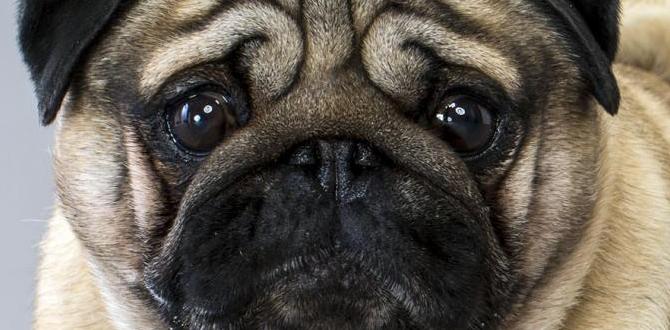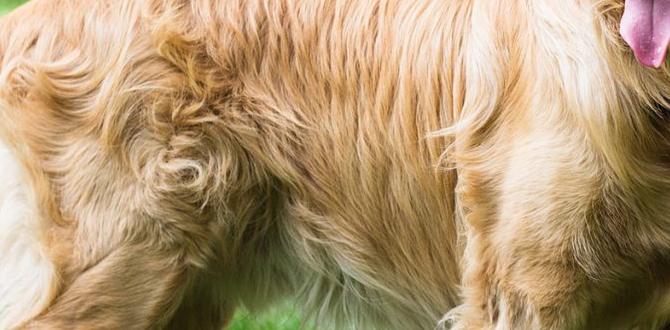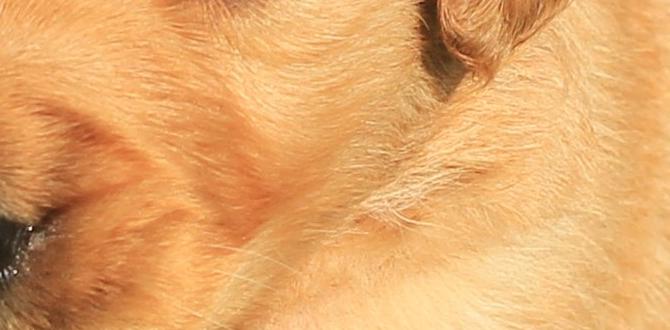Have you ever watched a dog suddenly snap at another dog while playing? It can be shocking to see. Dog aggression towards other dogs is a serious issue. Many owners worry when their furry friends display such behavior. Some might wonder, “Why does my dog act this way?”
Did you know that up to 70% of dog owners may experience aggression in their pets? That’s a big number! It shows that this problem is common, not rare. Understanding why dogs become aggressive can help us find solutions.
Imagine a sunny day at the dog park. You throw a ball, and two dogs rush to get it. Suddenly, they start barking and growling. What just happened? Discovering the reasons behind their aggression can help keep our dogs safe and happy.
In this article, we will explore the causes of dog aggression towards other dogs. We will also discuss ways to manage it. So, buckle up, and let’s dive into the world of dog behavior!
Understanding Dog Aggression Towards Other Dogs: Causes And Solutions

Understanding Dog Aggression Towards Other Dogs
Dog aggression towards other dogs can be puzzling for owners. This behavior often stems from fear, dominance, or poor socialization. Imagine you’re at the park, and your dog suddenly barks at another one. Why does this happen? Understanding the reasons can help you manage their behavior. It’s essential to recognize signs of aggression early. Training can improve their social skills. Did you know that with patience, many aggressive dogs can learn to play nicely?Types of Dog Aggression
Fearbased aggression: roots and triggers. Protective aggression: when dogs act to defend their territory.Dogs can show aggression for different reasons. Two common types are fear-based aggression and protective aggression. Fear-based aggression happens when a dog feels scared. This can be due to past experiences or sudden loud noises. Protective aggression kicks in when a dog thinks their territory is at risk. They want to keep their home and loved ones safe. Understanding these types can help us address dog behavior properly.
What causes fear-based aggression in dogs?
Fear-based aggression often happens because of traumatic experiences or unfamiliar situations. Dogs may react aggressively when they feel threatened or anxious. It’s important to recognize their triggers to help them feel safe.
What is protective aggression in dogs?
Protective aggression occurs when dogs feel the need to guard their space or family. They may bark or growl when someone approaches. This behavior can be normal, but training can help keep it under control.
Causes of Dog Aggression Towards Other Dogs
Socialization deficiencies: early experiences and their impact. Genetic predisposition: breed tendencies in aggression.Several factors can lead to dog aggression towards other dogs. Socialization deficiencies play a big role. A puppy needs to meet other dogs early in life to learn proper behavior. Without these experiences, a dog may act scared or aggressive. Some breeds also have a genetic predisposition to aggression. For example, certain dogs may naturally be more protective or territorial. Understanding these causes helps owners train and socialize their pets better.
What is the effect of socialization on dog behavior?
Socialization is crucial. Dogs that meet many people and other animals as puppies often become friendly adults. They learn to trust others and are less likely to act aggressively.
Key Points:
- Early experiences shape behavior.
- Positive interactions reduce fear.
- Genetics may influence aggression levels.
Signs of Aggressive Behavior
Body language cues: understanding postures and signals. Vocalizations: interpreting growls, barks, and whines.Dogs talk without words. They use their bodies to say a lot. If a dog stands tall with its ears up, it might feel brave or excited. But, if its tail is tucked and ears are back, it’s scared. Growls can be tricky. A soft growl might say, “Back off, buddy!” while a playful bark means, “Let’s have fun!” Here’s a simple table to show you these signs:
| Body Language | Meaning |
|---|---|
| Tail Wagging | Happy or friendly |
| Stiff Body | Feeling threatened |
| Ears Pinned Back | Scared or anxious |
Next time your dog speaks with its body or voice, listen closely! The way they stand or the sounds they make can tell you a lot. Understanding these signs can help keep the peace at the dog park. Remember, a wagging tail doesn’t mean trouble; it might mean your furry friend is just saying, “What’s up, pal?”
Training Techniques to Mitigate Aggression
Positive reinforcement methods: rewarding desired behaviors. Desensitization and counterconditioning: gradual exposure strategies.Training your dog to be friendly around others is like teaching them a fun game. First, use positive reinforcement. Reward your pup with treats or praise when they behave well. Dogs love snacks more than we love pizza! Next, try desensitization and counterconditioning. Slowly introduce your dog to other dogs while rewarding calm behavior. Progress at your dog’s pace; no need to rush like a squirrel on caffeine!
| Training Technique | Description |
|---|---|
| Positive Reinforcement | Reward good behavior with treats or praise. |
| Desensitization | Gradually expose your dog to other dogs from a distance. |
| Counterconditioning | Change your dog’s negative feelings to positive ones using treats. |
Professional Help and Resources
When to consult a canine behaviorist: signs that indicate the need. Recommended training programs and courses.Noticing your dog behaves badly around other dogs? This might be a sign to seek help. Look for these signs:
- Growling or barking aggressively
- Snapping or lunging
- Fearful reactions that turn into aggression
These actions can mean your dog is anxious or stressed. Seeking a professional dog trainer or canine behaviorist can be helpful. They provide great solutions and training programs to improve your dog’s behavior. Consider taking these recommended courses:
- Positive Reinforcement Training
- Socialization Classes
- Canine Good Citizen Program
This professional help can make a big difference!
What should you watch for with dog aggression?
Look out for signs like growling or snapping. These behaviors tell you that your dog may feel stressed around other dogs. Action is needed!
Preventive Measures
Early socialization practices: key ages for exposure. Managing environments: techniques for safe interactions.Socializing your dog early can make a big difference. The best ages for socialization are between 3 weeks and 16 weeks. During this time, they should meet friendly dogs and people. This can help them feel less scared later.
Managing their environment is also important. Here are some tips:
- Keep dog interactions positive.
- Choose safe places for playdates.
- Use a leash in public areas.
Remember, a calm and safe space helps dogs learn to play nicely. This builds confidence and good behavior!
How early should I socialize my dog?
Start socializing your dog as early as 3 weeks old. This is crucial for their confidence and behavior as they grow.
Techniques for Safe Interactions
Introduce your dog slowly to new friends and places.
Case Studies and Success Stories
Reallife examples of aggression management. Lessons learned from successful interventions.Many dog owners face challenges with dog aggression towards other dogs. Real-life stories show that change is possible. One dog named Max learned to play nicely after training with positive methods. His owner used treats to reward calm behavior. Another case involved Bella, who barked at every dog. After socialization classes, Bella became friendly. These lessons remind us that patience and love work wonders.
What are effective strategies for managing dog aggression?
Effective strategies include positive reinforcement, socialization, and proper training. These methods help dogs feel safe and learn good behavior.
- Use treats for good behavior.
- Introduce other dogs slowly.
- Attend training classes.
These approaches make it easier for dogs to get along. With time and effort, owners can see great improvements in their pets.
FAQs on Dog Aggression
Common misconceptions about aggression. Addressing typical owner concerns and questions.Many people think dog aggression means their furry friend is a bad boy. Not true! Aggression can come from fear, jealousy, or even guarding their favorite toy. It’s like when we get cranky after sharing our last cookie! Owners often worry about their pup’s behavior. They ask questions like, “Is my dog dangerous?” or “Can this be fixed?” The answer is often yes. Training and patience can turn a rowdy rascal into a friendly furball. Check out some common questions below:
| Question | Answer |
|---|---|
| What causes dog aggression? | Fear, lack of social interaction, and guarding instincts are key reasons! |
| Can I prevent aggression? | Absolutely! Early socialization and training help a lot. |
| Is it too late to change my dog’s behavior? | No way! With love and training, change is possible at any age. |
Conclusion
In summary, dog aggression towards other dogs can happen for many reasons. It’s important to stay calm and understand your dog’s feelings. You can help by training and socializing your dog regularly. If you see aggressive behavior, seek professional help. Knowledge is key, so read more about dog behavior to keep your pet happy and safe!FAQs
What Are The Common Causes Of Dog Aggression Towards Other Dogs?Dog aggression towards other dogs can happen for several reasons. Sometimes, a dog feels scared or threatened. Other times, a dog may want to protect its owner or territory. Dogs might also act aggressive if they haven’t learned to socialize well with others. Finally, some dogs just want to play too roughly and don’t understand when to stop.
How Can A Dog Owner Identify Signs Of Aggression In Their Dog During Interactions With Other Dogs?You can spot signs of aggression in your dog by watching their body language. If your dog growls, shows teeth, or barks loudly, this might mean they’re upset. Pay attention if their ears are back or if they’re staring hard at another dog. A stiff body or raised hackles (that’s the fur on their back) can also mean they feel threatened. If you see any of these signs, it’s a good idea to keep your dog away from others.
What Are Effective Training Techniques To Help Reduce Aggression In Dogs Toward Their Canine Counterparts?To help reduce aggression in dogs, you can use positive reinforcement. This means giving treats or praise when your dog behaves well around other dogs. Keeping your dog calm is important too. You can practice being near other dogs while staying relaxed. Finally, work with a trainer if needed. They can give you more tips and support.
How Can Socialization Practices Influence A Dog’S Behavior Towards Other Dogs?How we help puppies meet other dogs affects how they act later. When you take your dog to play with others, they learn to be friendly. If a dog only meets few dogs or has bad experiences, they might be scared or mean. Regular playdates and training help your dog feel safe and happy around other dogs. This makes playtime fun for everyone!
When Should A Dog Owner Seek Professional Help For Their Dog’S Aggressive Behavior Towards Other Dogs?You should get help if your dog often growls, barks, or tries to bite other dogs. If your dog feels scared or very angry, this can be dangerous. It’s also important if you can’t control your dog in public. A professional dog trainer can teach you both how to be safe and calm around other dogs. Don’t wait too long, getting help early can make things better!
Meet Elyse Colburn, the devoted canine companion and storyteller behind the enchanting world of “Tales, Tails, and Adventures Unleashed.” A passionate dog enthusiast with a heart full of paw prints, Elyse Colburn shares heartwarming tales and insightful adventures, celebrating the joy, loyalty, and endless antics that make every dog a true hero. Join Elyse Colburn on this tail-wagging journey, where every post is a love letter to our four-legged friends.







